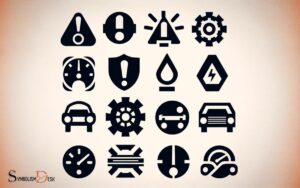Car Mercedes Warning Light Symbols: Urgent Attention!
When you encounter a warning light on your Mercedes-Benz dashboard, it’s important to understand what it signifies. These lights are categorized into different colors, indicating the severity of the issue.
Red lights usually denote urgent attention, orange or yellow lights signal something that needs to be checked soon, and green or blue lights are typically informational.
Here are some common Mercedes warning light symbols:
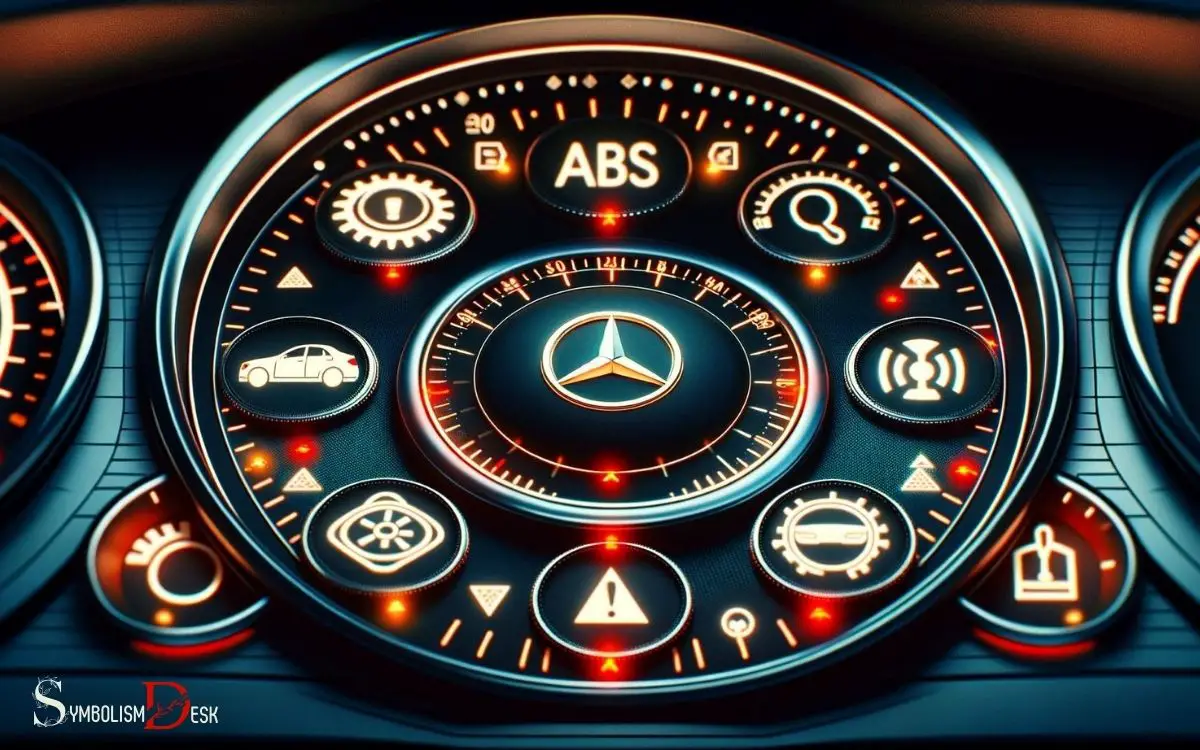
Key Takeaway
Common Warning Light Symbols
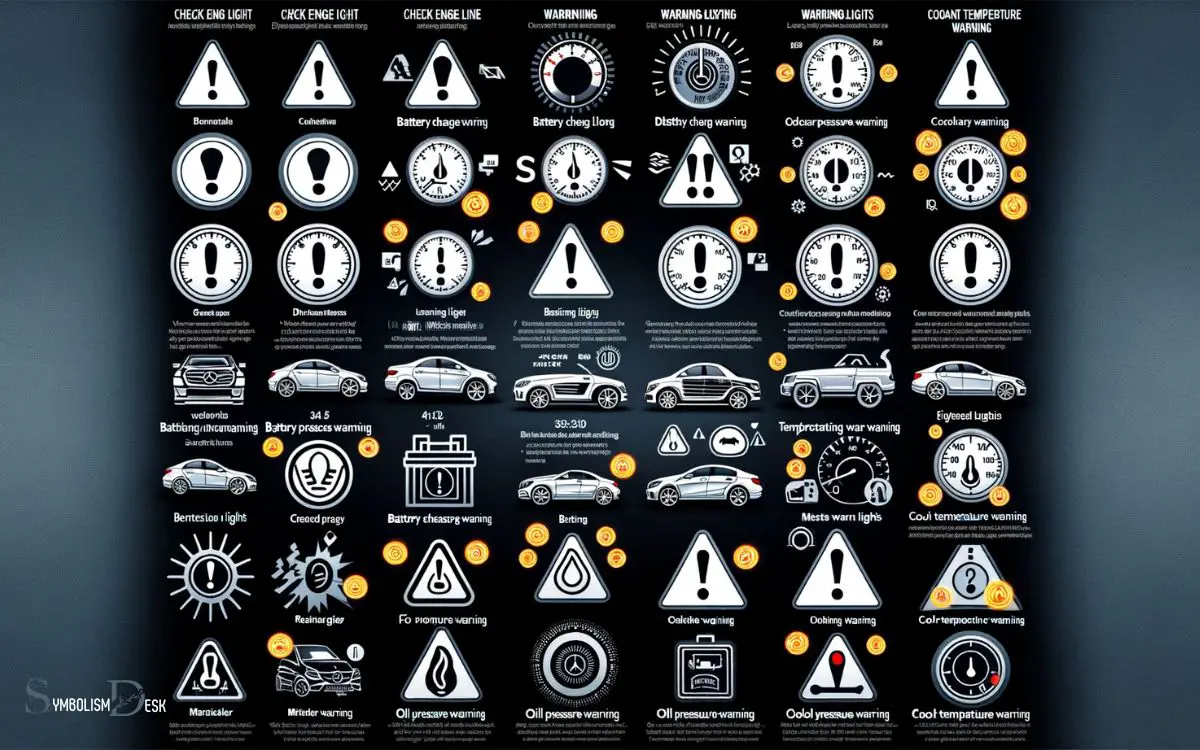
What do common warning light symbols in Mercedes cars indicate? Understanding these symbols is crucial for vehicle maintenance and safety.
The most common warning lights in Mercedes cars include the check engine light, which indicates a problem with the engine or its components. The battery light alerts the driver to issues with the electrical system or the battery itself.
The oil pressure light signifies low oil pressure, requiring immediate attention to prevent engine damage. The brake system light indicates potential issues with the braking system that need to be addressed promptly.
The tire pressure monitoring system (TPMS) light warns of low tire pressure, affecting vehicle handling and fuel efficiency. It’s essential to familiarize oneself with these warning symbols to ensure the vehicle’s optimal performance and safety.
Engine and Transmission Indicators
When it comes to engine and transmission indicators in a Mercedes, it’s crucial to monitor the engine oil level and transmission fluid temperature.
These two points play a vital role in ensuring the proper functioning and longevity of the engine and transmission systems. Understanding the significance of these indicators can help drivers address potential issues before they escalate.
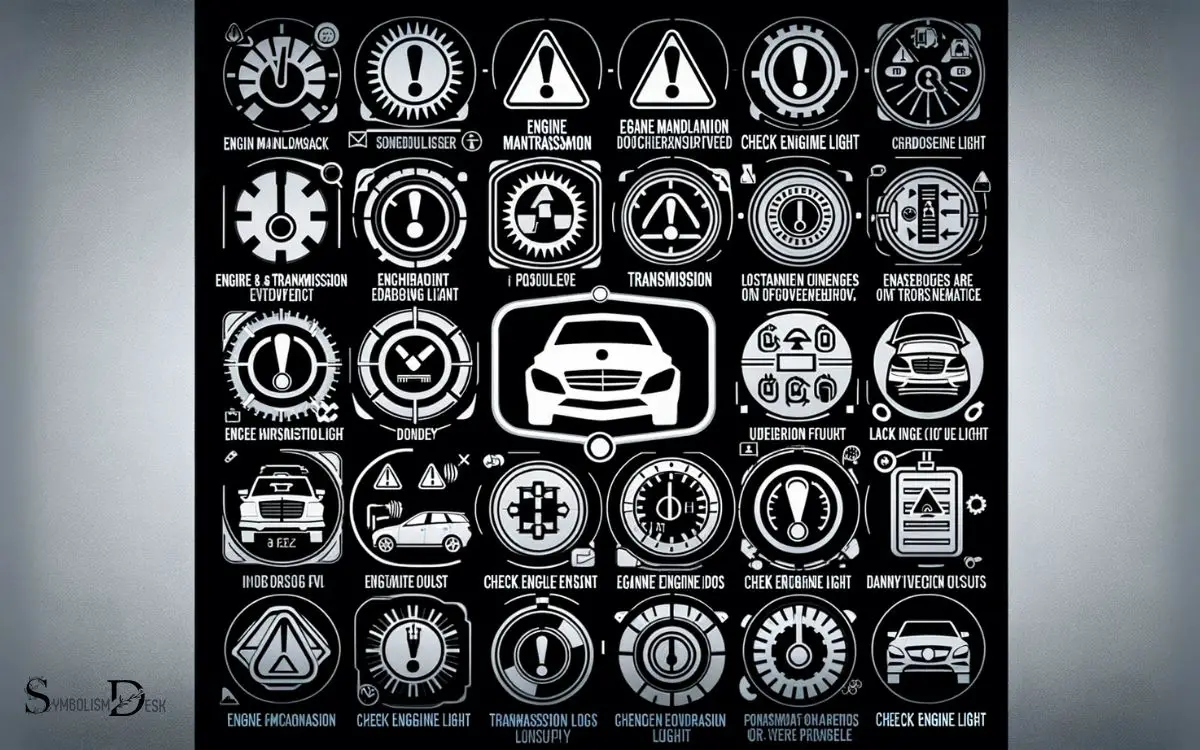
Engine Oil Level
When the engine oil level is low, the engine and transmission indicators on a Mercedes vehicle will illuminate. This warning light indicates that the engine oil level is below the minimum requirement and requires immediate attention.
Here are some important points to consider:
- Check the engine oil level using the vehicle’s dipstick or electronic oil level indicator.
- If the oil level is low, add the appropriate type of oil to bring it to the recommended level.
- Continuing to drive with low oil levels can cause damage to the engine and transmission components.
- Regularly scheduled oil changes and inspections can help prevent low oil levels and maintain engine health.
- If the warning light remains illuminated after adding oil, there may be an underlying issue that requires professional diagnosis.
Transmission Fluid Temperature
The transmission fluid temperature warning light on a Mercedes vehicle illuminates when the fluid temperature exceeds safe operating levels, indicating potential overheating and the need for immediate attention.
This warning is crucial as high transmission fluid temperatures can lead to accelerated wear and potential damage to the transmission system.
Refer to the table below for a better understanding of the transmission fluid temperature warning symbol and its meaning.
| Symbol | Meaning |
|---|---|
| Symbol | Transmission fluid temperature warning light |
| Color | Red |
| Action | Immediate attention and inspection required |
When this warning light comes on, it is essential to pull over, turn off the engine, and allow the transmission to cool down. Continuing to operate the vehicle with an overheated transmission can cause severe damage.
Brake System and Stability Control Warnings
Experiencing a brake system or stability control warning light illuminating on the dashboard can indicate a potential issue with the vehicle’s safety systems. It’s important to understand the implications of these warnings to ensure the vehicle’s safety features are functioning properly.
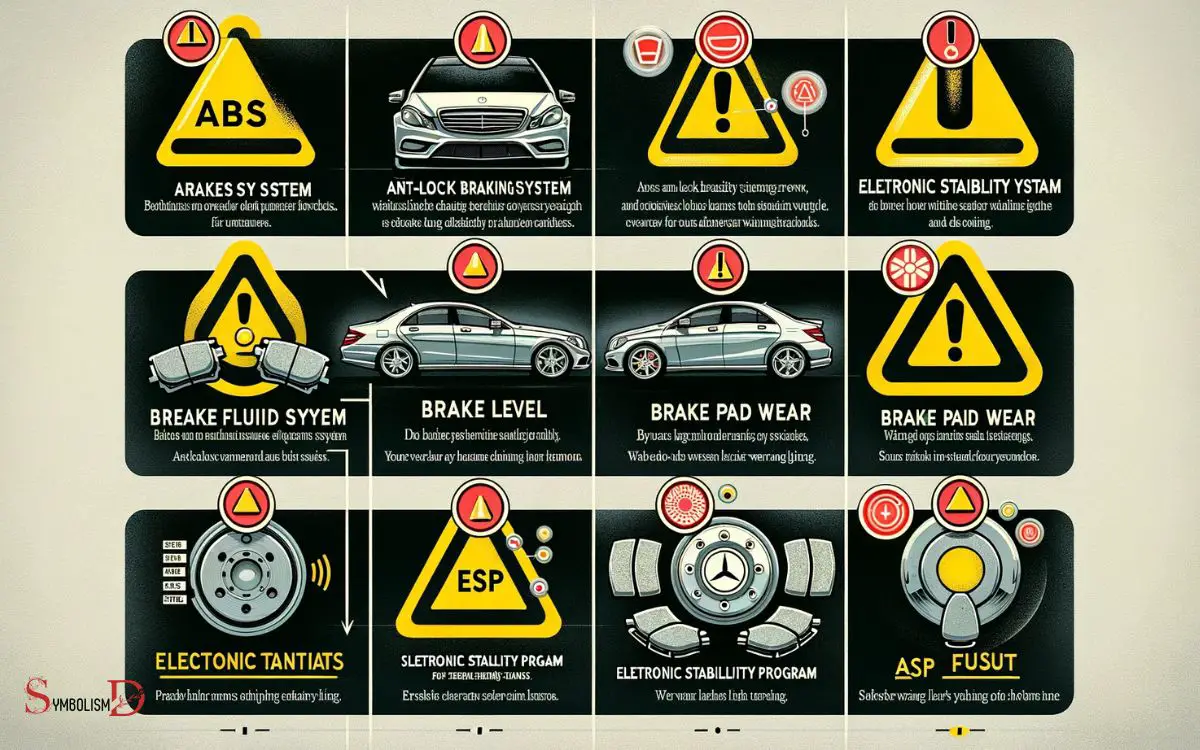
Here are some key points to consider:
- Check the brake fluid level and top up if necessary.
- Inspect the brake pads and discs for wear and tear.
- Verify that the parking brake is fully released.
- Consider the road conditions and adjust driving style if the stability control warning is due to slippery surfaces.
- Seek professional assistance if the warning persists, as it could indicate a more serious issue with the vehicle’s braking or stability control systems.
Tire Pressure and Monitoring Alerts
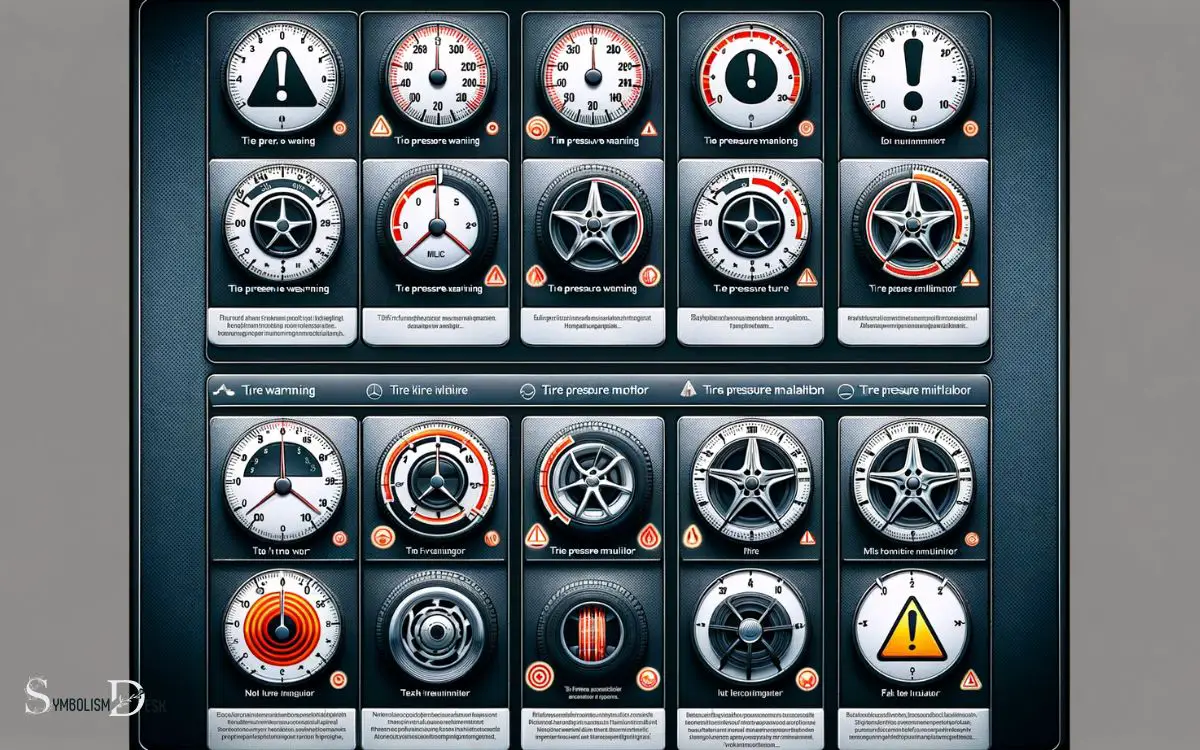
If a tire pressure or monitoring alert illuminates on the dashboard, drivers should promptly check the tire pressure and visually inspect the tires for any signs of damage or irregular wear. Low tire pressure can affect handling, fuel efficiency, and tire longevity.
To address this, drivers can use a tire pressure gauge to check and adjust the pressure to the manufacturer’s recommended levels.
Additionally, modern vehicles are equipped with tire pressure monitoring systems (TPMS) that alert drivers when tire pressure is significantly low.
These systems use sensors to monitor pressure and provide real-time alerts. It’s important to address tire pressure and monitoring alerts promptly to maintain optimal vehicle performance and safety.
Vehicle Lighting and Visibility Notifications
Upon detecting any lighting or visibility notifications, drivers should promptly address the issue to ensure optimal visibility and safety while on the road.
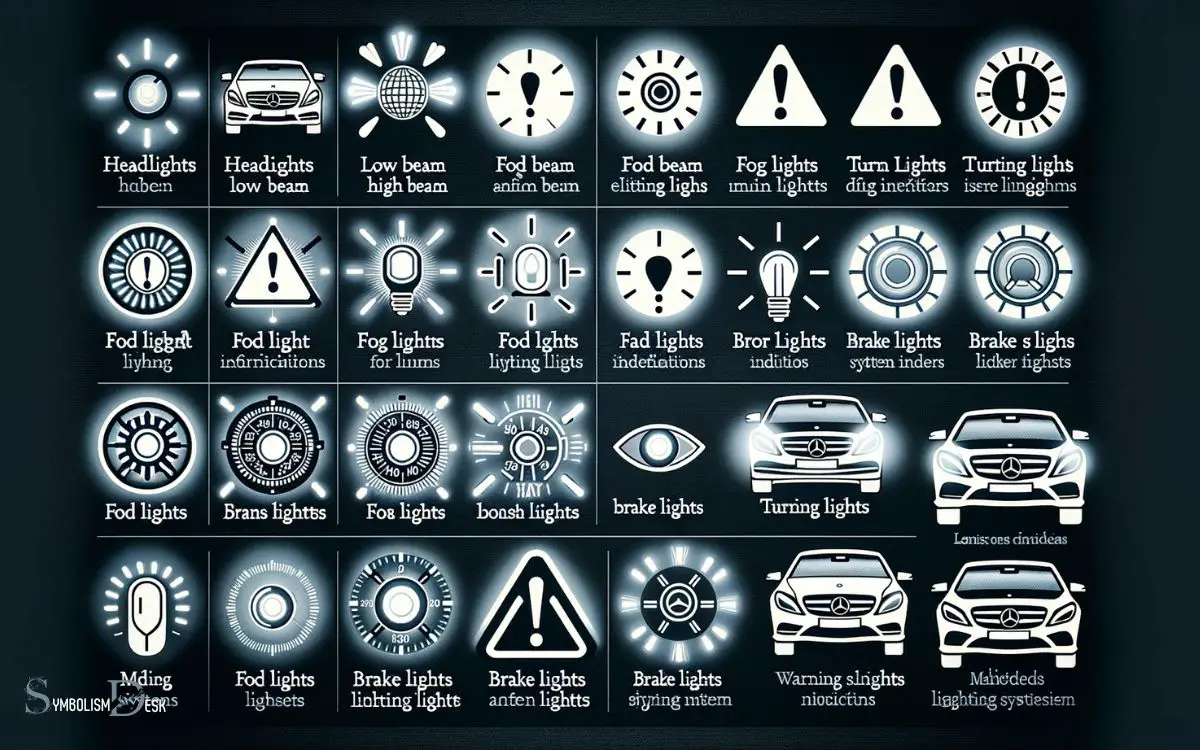
Here are some common vehicle lighting and visibility notifications to be aware of:
- Headlight or taillight out
- Fog light indicator on
- High beam indicator on
- Brake light malfunction
- Windshield wiper fluid low
Taking immediate action to resolve these notifications is crucial for maintaining visibility and ensuring the safety of the driver and other road users.
Regularly checking and maintaining the vehicle’s lighting and visibility systems can help prevent potential issues and ensure a clear line of sight in various driving conditions.
Additional Mercedes Warning Lights
The Mercedes vehicles may display a variety of additional warning lights to indicate specific issues or malfunctions. These lights serve as a crucial tool for drivers to understand the status of their vehicle.
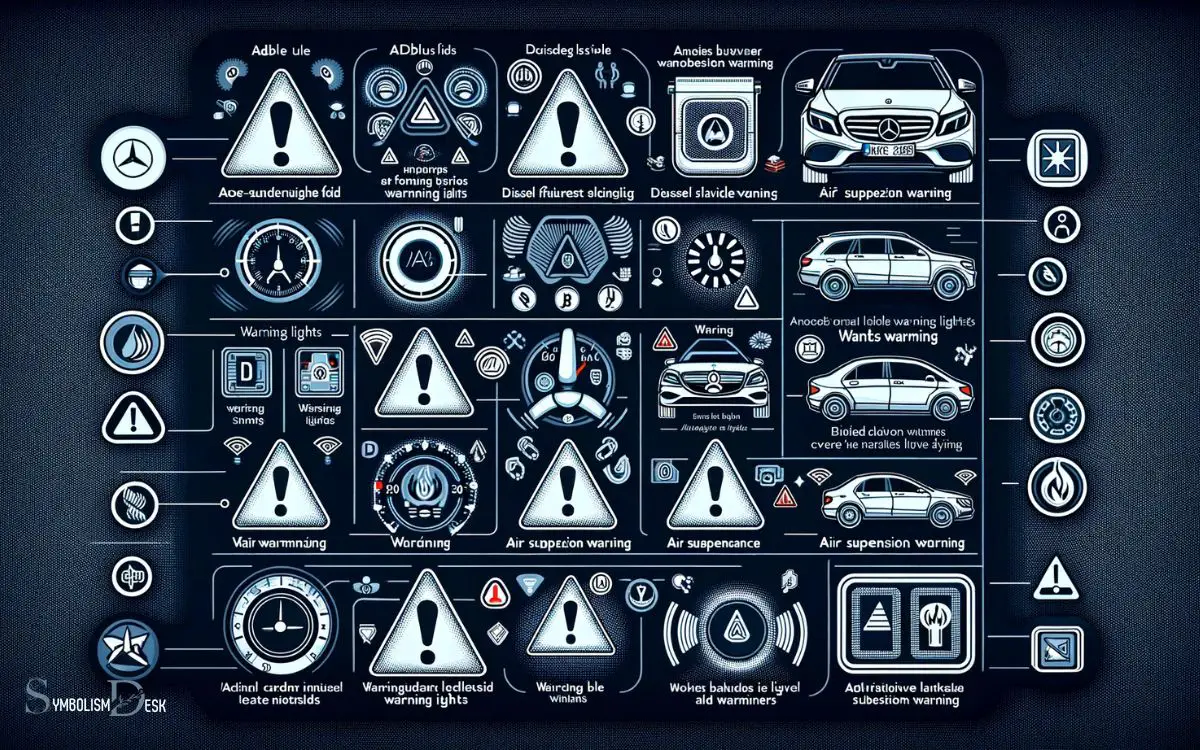
Here is a table detailing some of the additional warning lights and their meanings:
| Warning Light | Meaning |
|---|---|
| Brake Wear | Indicates worn brake pads. |
| Tire Pressure | Alerts low tire pressure. |
| Oil Level | Indicates low engine oil level. |
| Fuel Reserve | Signals low fuel level. |
These additional warning lights are designed to enhance driver awareness and prompt timely action to address potential issues. Understanding these symbols can help Mercedes drivers proactively maintain their vehicles and avoid potential problems. By familiarizing themselves with car dashboard warning light names, drivers can quickly identify and respond to alerts, ensuring their safety and the longevity of their vehicle. Each symbol is intentionally designed to communicate specific information about the car’s condition, ranging from low tire pressure to critical engine issues. Staying informed about these warning lights empowers drivers to take preventative measures before small concerns escalate into costly repairs.
Conclusion
Understanding the warning light symbols on a Mercedes is crucial for vehicle maintenance and safety. For example, a driver who ignores the tire pressure warning light may experience decreased fuel efficiency and increased risk of tire blowouts.
It’s important for Mercedes owners to familiarize themselves with these symbols and seek professional assistance when necessary to ensure optimal performance and safety on the road.






